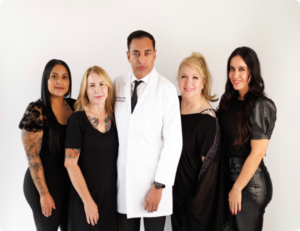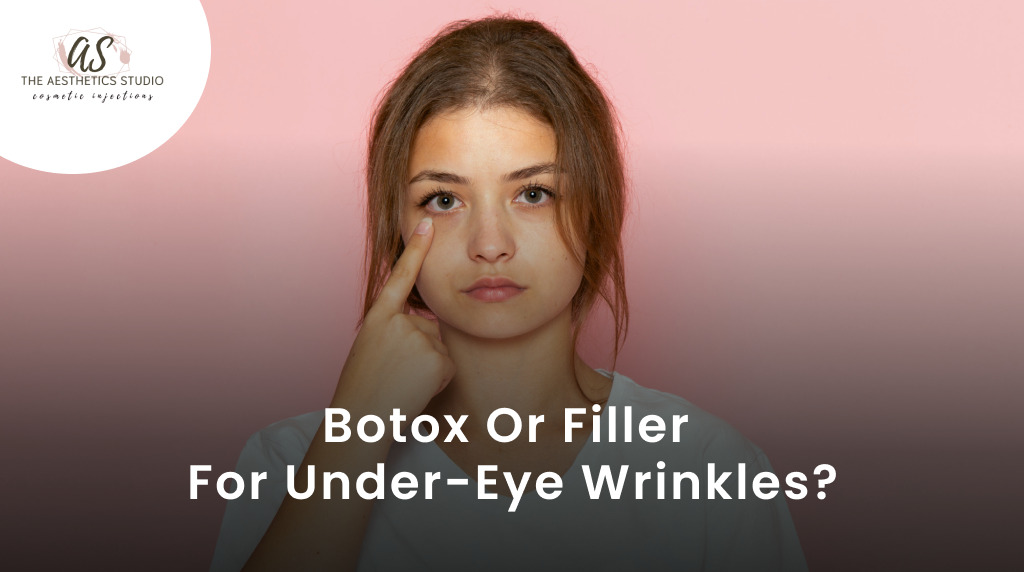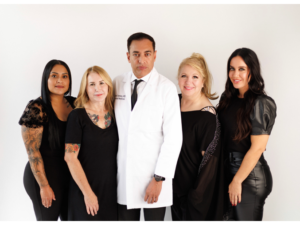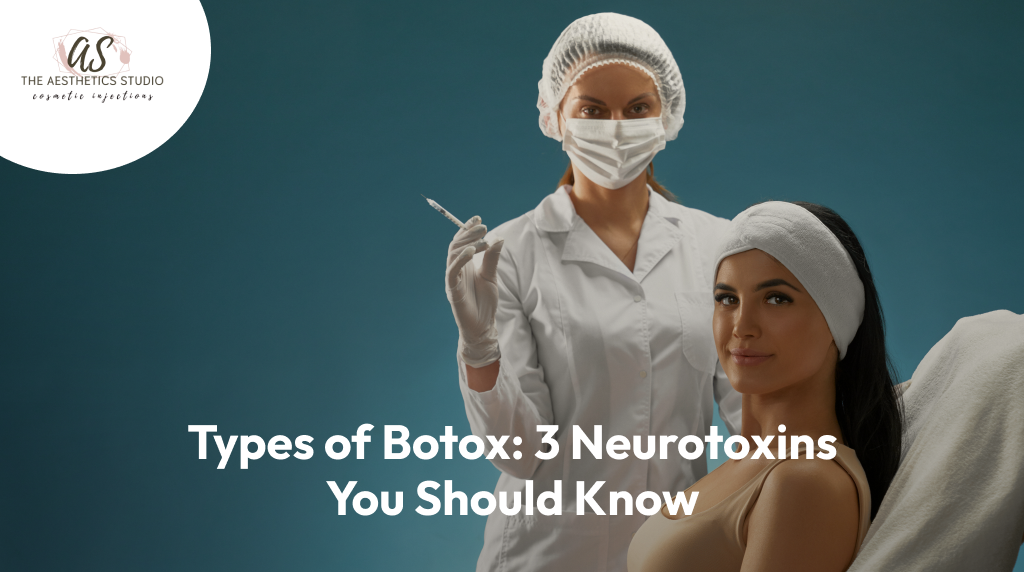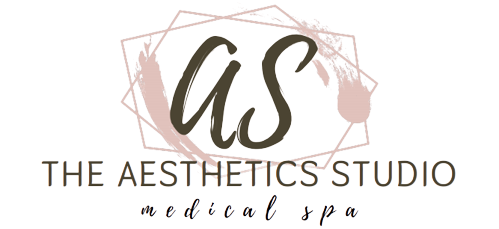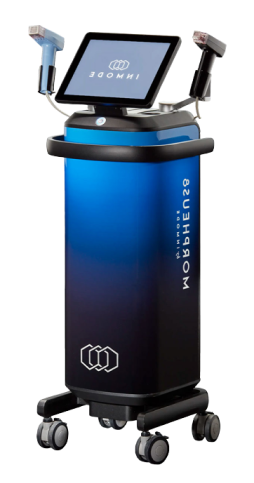Are you struggling with under-eye wrinkles and wondering which treatment option is right for you? Botox and fillers are two popular solutions that can help rejuvenate your under-eye area and minimize the appearance of wrinkles. In this article, we will dive into the effectiveness of Botox treatment and filler treatment for under-eye wrinkles, allowing you to make an informed decision about which option may be best suited for your needs.
Understanding Under-Eye Wrinkles
Before diving into the comparison, it’s important to understand what under-eye wrinkles are and what causes them. This section will provide an overview of the factors that contribute to the development of under-eye wrinkles.
Under-eye wrinkles, also known as crow’s feet or laughter lines, typically appear as fine lines and creases around the delicate skin beneath the eyes. They can be a natural part of the aging process, but other factors can also contribute to their formation.
1. Age: As we age, the production of collagen and elastin – proteins responsible for maintaining the skin’s elasticity and structure – decreases, leading to the appearance of wrinkles.
2. Sun exposure: Prolonged exposure to the sun’s harmful UV rays can accelerate the breakdown of collagen and elastin, causing premature aging and the formation of wrinkles.
3. Smoking: Smoking not only damages the skin by reducing blood flow but also decreases collagen production, making the skin more susceptible to wrinkles.
4. Genetics: Some individuals may be genetically predisposed to develop under-eye wrinkles at an earlier age or have a higher likelihood of developing them due to family history.
5. Facial expressions: Repetitive facial movements, such as squinting or smiling, can contribute to the development of wrinkles over time, including under-eye wrinkles.
6. Skin dehydration: When the skin lacks proper hydration, it can become dry and lose its elasticity, making it more prone to wrinkling.
“The appearance of under-eye wrinkles can be influenced by a variety of factors, including age, sun exposure, smoking, genetics, facial expressions, and skin dehydration.”
By understanding the causes of under-eye wrinkles, individuals can make informed decisions about the most suitable treatment options to address their specific concerns. In the next sections, we will explore the effectiveness of Botox and filler treatments, providing insights into their benefits, potential side effects, and overall efficacy in reducing the appearance of under-eye wrinkles.
Brief overview table:
| Treatment Option | Main Benefits | Potential Side Effects | Longevity |
|---|---|---|---|
| Botox | Reduces muscle movement, minimizing wrinkles | Temporary bruising, swelling, drooping eyelid | 3-4 months |
| Filler | Restores volume, smoothes under-eye wrinkles | Temporary swelling, bruising, asymmetry | 6-24 months |
Read also: Xeomin for crow’s feet: Does it work?
Botox Treatment for Under-Eye Wrinkles
Botox is a popular non-surgical treatment option for under-eye wrinkles. It is a neurotoxin derived from the bacteria Clostridium botulinum, which relaxes the muscles responsible for the formation of wrinkles.
During the treatment, a small amount of Botox is injected into specific muscles around the eyes. The neurotoxin works by blocking the nerve signals, temporarily paralyzing the muscles and smoothing out the wrinkles.
The process is brief and involves minimal downtime. Many people choose Botox for under-eye wrinkles due to its effectiveness and convenience. However, it’s important to consult with a qualified professional to determine if Botox is the right treatment for your specific concerns.
Potential Benefits of Botox for Under-Eye Wrinkles:
- Reduces the appearance of fine lines and wrinkles
- Smooths the skin around the eyes
- Provides a more youthful and refreshed appearance
Potential Side Effects of Botox for Under-Eye Wrinkles:
- Temporary bruising or swelling at the injection site
- Mild discomfort or pain during the treatment
- Headaches
It’s important to note that the effects of Botox are temporary, typically lasting for three to four months. To maintain the desired results, repeat treatments are necessary. Additionally, Botox may not be suitable for everyone, and a thorough consultation with a healthcare professional is recommended.

When it comes to treating under-eye wrinkles, fillers offer a distinct approach that can effectively address these concerns. Unlike Botox, which temporarily relaxes the muscles, fillers work by adding volume to the skin, reducing the appearance of fine lines and wrinkles.
How do fillers work?
Fillers are typically made of hyaluronic acid, a substance naturally found in the body that helps retain moisture and plumpness in the skin. By injecting fillers into targeted areas under the eyes, the delicate skin in this area can be revitalized, resulting in a smoother, more youthful appearance.
What are the benefits of filler treatment?
- Reduces the appearance of under-eye wrinkles
- Restores volume to hollowed areas
- Improves skin texture and elasticity
- Results are visible immediately with minimal to no downtime
Are there any potential drawbacks to consider?
While filler treatments for under-eye wrinkles are generally safe and well-tolerated, there are some potential side effects to be aware of. These can include temporary swelling, bruising, or mild discomfort at the injection sites. It’s essential to choose a qualified and experienced professional to ensure a successful and safe treatment outcome.
Read also: Fillers For Dark Under-Eye Circle
Botox vs. Filler: Which is Right for You?
Now that we’ve discussed both Botox and filler treatments, let’s compare these options side by side. Below you will find a comprehensive comparison highlighting the key differences in terms of the type of wrinkles they target, longevity, and overall effectiveness.
Types of Wrinkles
Both Botox and filler treatments can address under-eye wrinkles, but they target different types of wrinkles.
- Botox: Botox injections primarily target dynamic wrinkles, which are caused by muscle movement. It operates by calming the muscles responsible for these wrinkles, leading to a more seamless and refined appearance.
- Fillers: Fillers are more effective at targeting static wrinkles, which are visible even at rest. They add volume to the skin, filling in wrinkles and restoring a youthful look.
Longevity
The longevity of the results is an important factor to consider when choosing between Botox and filler.
Botox typically lasts around 3-6 months before a follow-up treatment is needed to maintain the results. Fillers, on the other hand, can last anywhere from 6 months to 1 year or even longer, depending on the type of filler used.
Overall Effectiveness
When it comes to overall effectiveness, Botox and filler have their own strengths.
Botox is highly effective in reducing the appearance of dynamic wrinkles, particularly for crow’s feet and frown lines. It provides a smoother, more youthful look, with results that gradually improve over time.
Fillers are excellent for filling in static wrinkles and adding volume to the under-eye area. They can also improve the appearance of hollows and dark circles, giving a refreshed and rejuvenated appearance.
Ultimately, the right choice between Botox and filler depends on the type of wrinkles you have, your desired results, and the advice of a qualified professional.
| Comparison | Botox | Filler |
|---|---|---|
| Types of Wrinkles | Targets dynamic wrinkles | Targets static wrinkles |
| Longevity | 3-6 months | 6 months to 1 year or longer |
| Overall Effectiveness | Eases crow’s feet and frown lines, provides gradual improvement | Fills static wrinkles, adds volume, improves hollowness and dark circles |
Combining Botox and Filler for Optimal Results
In the quest to diminish under-eye wrinkles, a combination treatment of Botox and filler may offer exceptional results. By strategically combining these two treatments, patients can address different aspects of under-eye wrinkles, achieving a more comprehensive and natural-looking outcome.
The key benefit of combining Botox and filler lies in their complementary effects. Botox, known for its muscle-relaxing properties, can effectively target dynamic wrinkles caused by the repetitive movement of facial muscles. On the other hand, fillers work by adding volume to the skin, smoothing out static wrinkles that are present even at rest. By utilizing both treatments in tandem, patients can address both types of wrinkles, resulting in a more rejuvenated appearance.
When is combining Botox and filler recommended? It’s often ideal for individuals with multiple concerns, as well as those looking for a comprehensive, all-in-one approach to addressing under-eye wrinkles. Common scenarios where a combination treatment may be recommended include:
- Pronounced under-eye creases
- Loss of volume in the under-eye area
- Presence of both dynamic and static wrinkles
During the treatment process, a skilled practitioner will assess your specific needs and determine the appropriate combination of Botox and filler. They will strategically inject Botox to target the underlying muscles responsible for dynamic wrinkles, while filler will be carefully placed to add volume and smooth out static wrinkles.
The combined treatment typically takes around 30-60 minutes, depending on the extent of the area being treated and the number of injections required. Patients can expect minimal downtime and may experience mild swelling or bruising, which subsides within a few days.
Combining Botox and filler for under-eye wrinkles requires the expertise of an experienced and qualified practitioner. It’s essential to choose a practitioner with a thorough understanding of facial anatomy and the ability to tailor the treatment to your unique needs. By undergoing this combination treatment, you can achieve optimal results and enjoy a more youthful and rejuvenated under-eye area.
Conclusion
After reviewing this guide, you’ll better understand whether Botox, fillers, or a combination suits your under-eye wrinkle needs. Botox treatment is great for dynamic wrinkles, minimizing muscle movement-induced lines. Filler treatment, on the other hand, tackles static wrinkles and volume loss. For optimal results, a mix of Botox and fillers may be considered. Book Your Appointment with us at The Aesthetics Studio to tailor the ideal treatment plan for your specific goals.
Frequently Asked Questions:
Q1. What is the difference between Botox and filler for under-eye wrinkles?
Botox and filler are two different types of treatments for under-eye wrinkles. Botox relaxes muscles, while filler adds volume to smooth out wrinkles.
Q2. How long does Botox treatment for under-eye wrinkles last?
The effects of Botox treatment for under-eye wrinkles typically last around 3-4 months. However, results may vary depending on individual factors and the dosage used.
Q3. What are the potential side effects of Botox treatment for under-eye wrinkles?
Some potential side effects of Botox treatment for under-eye wrinkles include minor swelling or bruising at the injection site, headache, and temporary drooping of the eyelid. Typically, these side effects are temporary and tend to resolve spontaneously.
Q4. Can filler be used to treat under-eye wrinkles?
Yes, filler can be used to treat under-eye wrinkles. It helps to add volume to the area, reducing the appearance of wrinkles and fine lines.
Q5. How long do the results of filler treatment for under-eye wrinkles last?
The longevity of filler treatment for under-eye wrinkles can vary depending on the type of filler used. Generally, results can last anywhere from 6-12 months.
Q6. Can Botox and filler be used together for under-eye wrinkles?
Yes, in some cases, Botox and filler can be used together for under-eye wrinkles. This combination treatment approach can target both muscle relaxation and volume restoration for optimal results.


